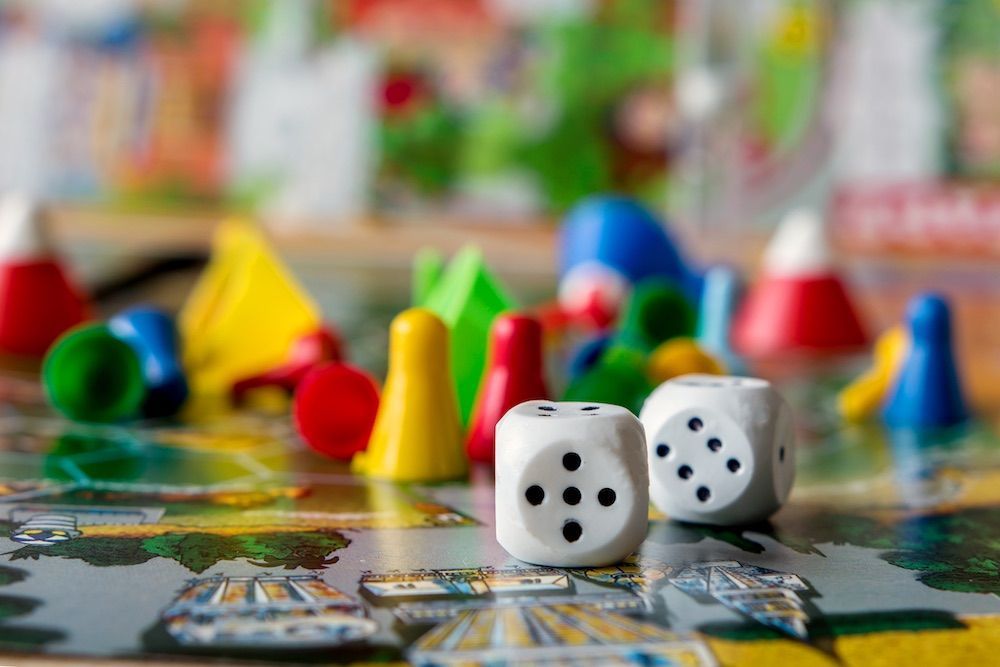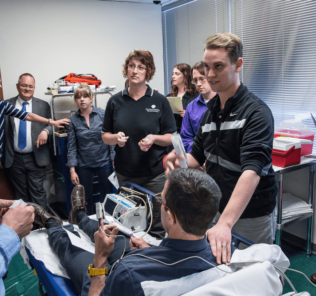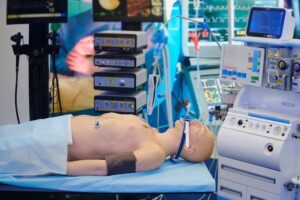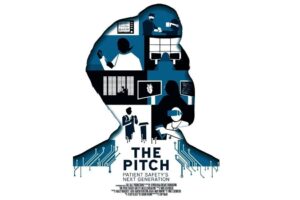How to Use Table-top Simulation Games as Part of Simulation-based Education
When people think about deploying healthcare simulation education, many educators tend to think of manikin-based, standardized patient-based (SP), or computer-based (includes virtual reality), but to a lesser degree, consider table-top simulation (TTS) as an option. The use of board games in education is far from a new concept. Research supports the use of games in this arena fairly broadly. When thinking about games as a form of simulation, however, many educators need to make the necessary connections to appreciate the significant overlaps between games and traditional simulation. Does this mean that all games are also simulations? No, but there are many that, in fact, are. This HealthySimulation.com by Jill Sanko, PhD, APRN, CHSE-A, FSSH, will explore ways to use table-top simulation games in simulation-based education.
Table-top simulation is often overlooked as a viable educational tactic within the simulation-based suite of educational modalities. In part, this may be related to many TTSs look like games and simulationists not viewing games in the same way they view other types of simulation, or they are viewed as games, and games are not viewed as sound pedagogy. Both of these stances represent narrow views of what possibilities exist. Understanding what constitutes TTS may be another factor for the less frequent utilization of table-top simulation games within the simulation space.
- According to the Healthcare Simulation Dictionary, table-top simulation is defined as:
- An educational tool intended to provide students/learners an opportunity to apply knowledge through formal discussion of a described scenario (Lehtola, 2007).” and
In the context of tabletop exercise, involves key personnel discussing simulated scenarios in an informal setting. Can be used to assess plans, policies, and procedures (California Hospital Association, 2017).
Sponsored Content:
Neither of these definitions resonates with this author as someone who likes to think they are somewhat of an expert in the TTS space. In the context of use and expectations for any given topic, an understanding is paramount, and definitions matter as they clarify the meaning of a construct. Term meanings are vital in communicating within and across disciplines to develop a shared understanding. Without a shared understanding, opportunities can be missed. Varied terminology is rampant in healthcare simulation, so the fact that my definition of TTS does not match the Simulation Dictionary definitions is not a surprise to me, but it does cause issues.
The author recalls attending a session at an IMSH several years ago where the title indicated that the presenters would be presenting on TTS. Therefore, I expected to be attending a presentation on the use of ‘my definition’ of TTS. What was presented, however, was a case study exercise done around a table. This presentation did not fit within my worldview of TTS; however, it did fit the description of a table-top simulation as presented in the Healthcare Simulation Dictionary. Needless to say, I was a bit disappointed.
This incident made me wonder, and still does, how does the larger simulation community define table-top simulation? Are misunderstandings creating missed opportunities for the use of TTS in educational settings? I define table-top simulation as a scenario-based activity that utilizes physical objects (character pieces/representations, game board, cards, dice, chips, coins, spinners, etc.) with or without role-play or a storyline/narrative that facilitates learning, discourse, and discovery.
Like all forms of simulation, table-top simulation creates experiential learning environments that engage learners using narrative frameworks where learning can occur from errors, debriefings, discussions, dialogues, and trials. TTS also creates space for learning alongside and guided by others when TTS is facilitated. TTS oftentimes can be carried out at a lower cost using fewer faculty compared to manikin, SP, or VR simulation. TTS is a significant benefit for under-resourced programs.
Sponsored Content:
TTS may afford the opportunity to learn different concepts more easily than using mannikin-based, SP, or virtual reality (VR) simulation. Topics that come to mind include systems thinking, the impacts of poverty, financial topics, management and delegation of others, supply chain management, and quality improvement. Games not specific to a particular topic can be used to teach other concepts with out-of-the-box thinking. Research on the use of Chess, for example, found the development of chess skills “significantly and positively correlated with four broad cognitive abilities: fluid reasoning, comprehension-knowledge, short-term memory, and processing speed” and that chess instruction moderately improves the cognitive skills. This author has used Legos to teach communication skills and lenticular puzzles to teach teamwork and perspective taking skills.
TTS allows topics frequently taught using mannikin-based, SP, and VR simulation, as a new way to teach these subjects and impart knowledge and skills. Table-top simulation games exist that delve into neonatal resuscitation (RETAIN), managing an emergency department safely (The Floor), infection control (Patient Zero), and medication cross reactions, to name a few. There are also educational games that can be used to educate on medical topics that were not specifically designed for healthcare students, but provide an excellent platform for expanding knowledge and skills relevant to healthcare. Examples include Cranium, Diagnos THIS, and a kid fan favorite, Operation.
Table-top simulation games can be used like other types of simulation for both formative or summative assessments and are well suited for interprofessional education (IPE). Table-top simulation games are ideal platforms to impart lessons around IPE since very often discipline-specific knowledge is not needed or even, in some cases, beneficial to teach important IPE competency-related knowledge and skills, including communication and teamwork skills, and deepening the appreciation for the various values and ethical principles shared within interprofessional teams. One such table-top simulation widely employed and researched for this purpose is Friday Night at the ER.
View the HealthySimulation.com LEARN CE/CME Platform Webinar The Impact of Serious Games and Gamification in Healthcare and Clinical Education to learn more!
There are limitations of TTS, some of which are not different from those of other forms of simulation, but should be known. A board-based TTS may only be designed for a set number of players per board. Not all board-based TTS are designed to be played using multiple boards simultaneously. However, some are, which allows for expansion of their use and even the opportunity for additional learning to occur. When board-based TTS is designed for cross board player interactions, this can assist in mimicking multi-team interactions and teaching how to navigate inter- and intra-team interactions. TTS does have fixed and ongoing costs, although these are often at a lower cost compared to other forms of simulation. A learning curve is associated with their use for both the learner and the educator. Some TTS games are quite complex and require learners to navigate this complexity. For some learners, this can be frustrating and take away from learning. Facilitators need to acknowledge this and help learners to learn despite these feelings.
As other forms of simulation are used more frequently and broadly, the use of TTS games may present a new, exciting, and different way to reach students that avoids some of the negatives that can accompany immersive simulation, including learner anxiety related to ‘performing’, the emotionality of some simulation encounters, and cybersickness that is encountered by some individuals during VR simulation. With the call for more innovation in the classroom, the predilections’ of the newest generation of learners (Generation Z), including opportunities to connect learning to real-world scenarios and their preference for hands-on experiences, table-top simulation games should become more prevalent in the suite of educational techniques used to educate future healthcare professionals. Simulation professionals can assist in making this happen and work with others to develop relevant skills to carry out table-top simulations underpinned by established simulation standards of practice.
Learn More About Medical Board Games!
Jill Sanko is an award-winning PhD-prepared nurse scientist. She began her research career as a research nurse at the National Institutes of Health (NIH). During her almost decade of service at NIH, she worked in several capacities including as support research staff and as an associate principal investigator. She was also integral in establishing the NIH Clinical Center’s simulation and patient safety program. In 2008 she moved back to Miami where she joined the University of Miami first at the Center for Patient Safety and later at the School of Nursing and Health Studies where she continued teaching and researching the impacts of simulation-based education on patient safety.
With over 40 publications in these areas and numerous national and international presentations she has helped to build the body of knowledge in using simulation as a technology to improve patient safety and has been recognized for these efforts including authoring two Articles of Influence, induction into the Academy for the Society for Simulation in Healthcare, recognition as an INACSL -Frontline Simulation Champion, and a Breakthrough Learning Hero of Healthcare Simulation. Currently, she is a contributing faculty member at Walden University and an Adjunct Associate Professor at MGH-IHP.
Sponsored Content:



















